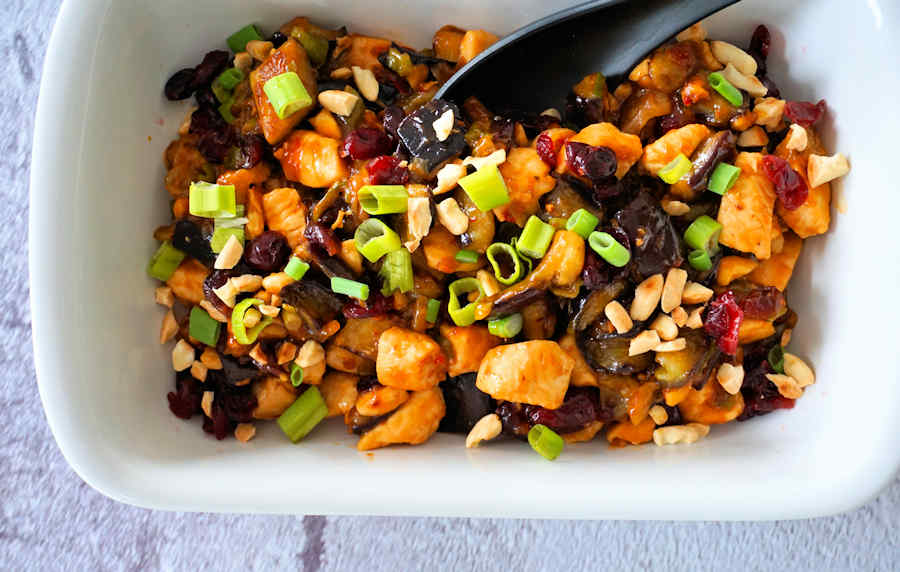The almond crunch and the cranberry sweetness may not be entirely orthodox in this chicken yu xiang recipe, but the end product is divine.

What is yu xiang sauce like?
Yu xiang means ‘fish fragrant’. Before you recoil in horror of the prospect of fish flavoured chicken, let me assure you no fish is involved in the recipe, not even fish or oyster sauce. It’s just the Chinese way of expressing deliciousness in an ingenious manner.
The sauce it the salty-sweet marvel, so hard to encounter outside Asian cooking. I used to think it was impossible to cook Asian dishes well, if only for the number of condiments and ingredients you needed to store for the sole purpose of cooking stir fries.
But it’s completely a fallacy: ginger, garlic and soy sauce are really the staples, and I’m sure you use them not only in your chow meins.
Substitutes for Asian recipes
It will NOT be 100% authentic, but the flavours still will be good if you substitute less often used or less easily available ingredients. Shaoxing wine can be replaced with dry sherry. Rice vinegar can be replaced with white wine vinegar.
And chilli bean sauce, toban djan, is first of all gorgeous enough to justify buying a jar, and secondly, any chilli paste will do at a push. Ketsap manis? Mix sugar into soy sauce. And for oyster sauce you could use some nutritional yeast or Marmite but don’t quote me on it.
But if you decide to stock up on authentics, I’m sure you won’t regret it. After all, that’s what makes the far away land food taste so good and is so difficult to imitate at home.
How to cook yu xiang chicken?
Chicken yu xiang is a variety on the theme. Yu Xiang aubergine is one of my all-time favourite vegetarian dishes ever, possibly because aubergine is a good meat substitute, flavour- and texture-wise if not nutritionally.
I kept the aubergine in my recipe and added the chicken breast pieces, but you can omit the aubergine if you like. It will take about half an hour off your total cooking time!
The sauce is easy to make, starting with the garlic, ginger and spring onions in the wok, and adding the chilli paste and the liquid mix of soy sauce, honey and Shaoxing wine.
That’s all there is to it, the pickles which some recipes state as mandatory can be skipped if you use rice wine. I have also been known to add either pickled jalapeños or sushi ginger instead – both work well.
So you can make the sauce and dump the chicken pieces into it, like an afterthought, to let them cook in it as traditional recipes hold. Or like I have done, reverse the order and start with searing the chicken in the wok, then make the sauce around the chicken.
It is a gorgeous dish, best served with plain rice but if you’re a noodle monster, soak some rice or egg noodles to go with the chicken instead.